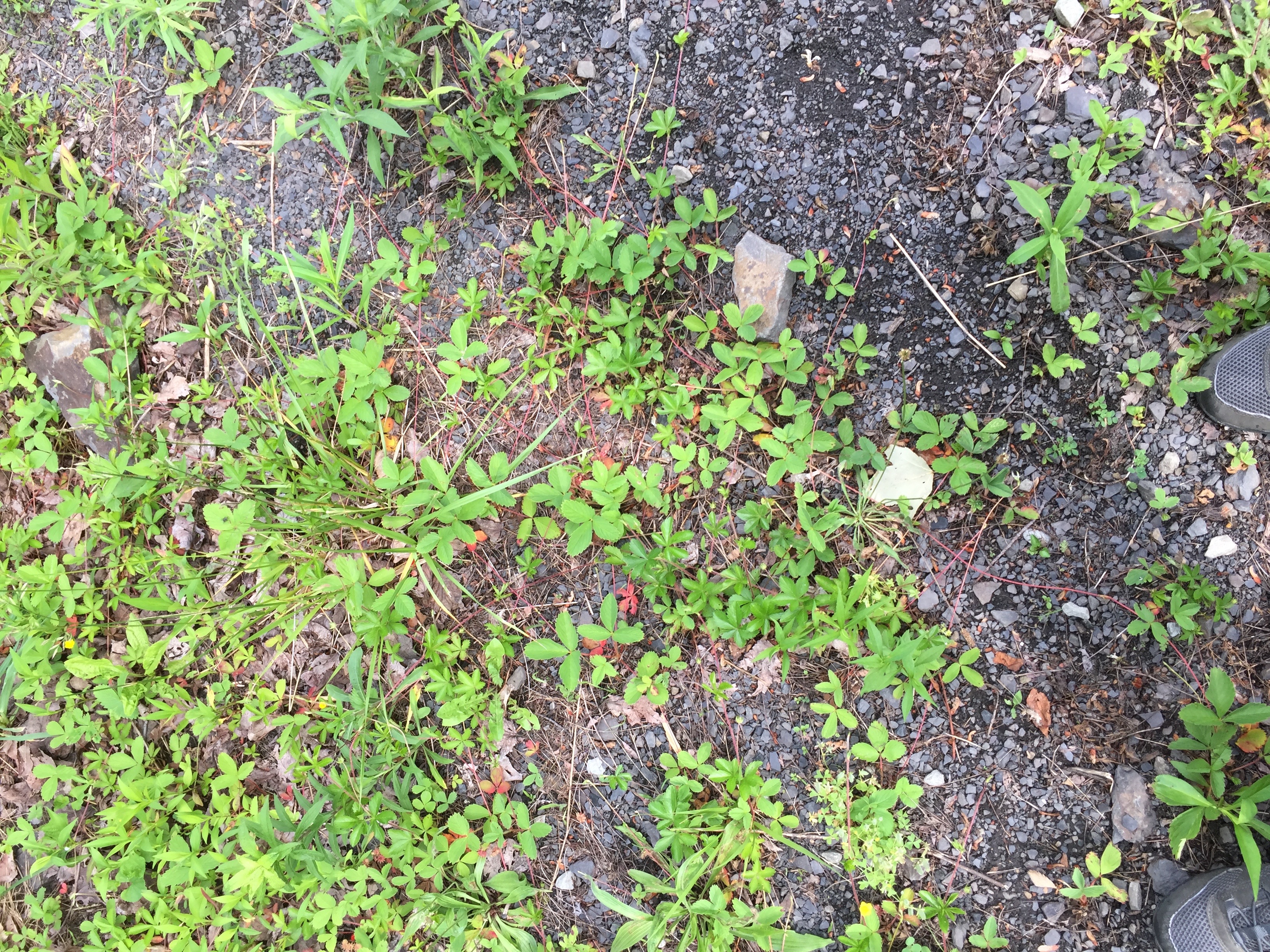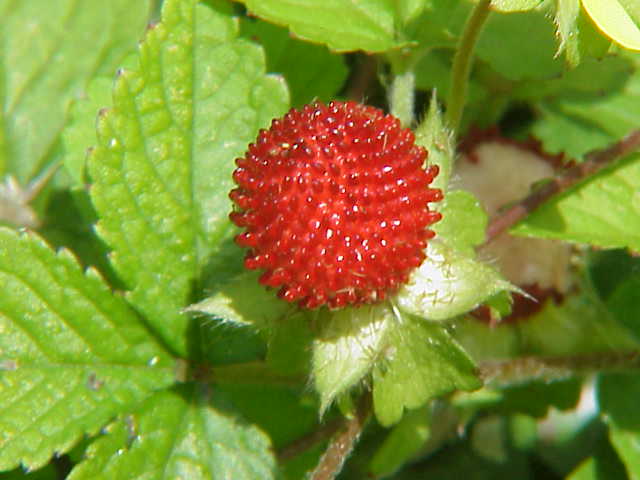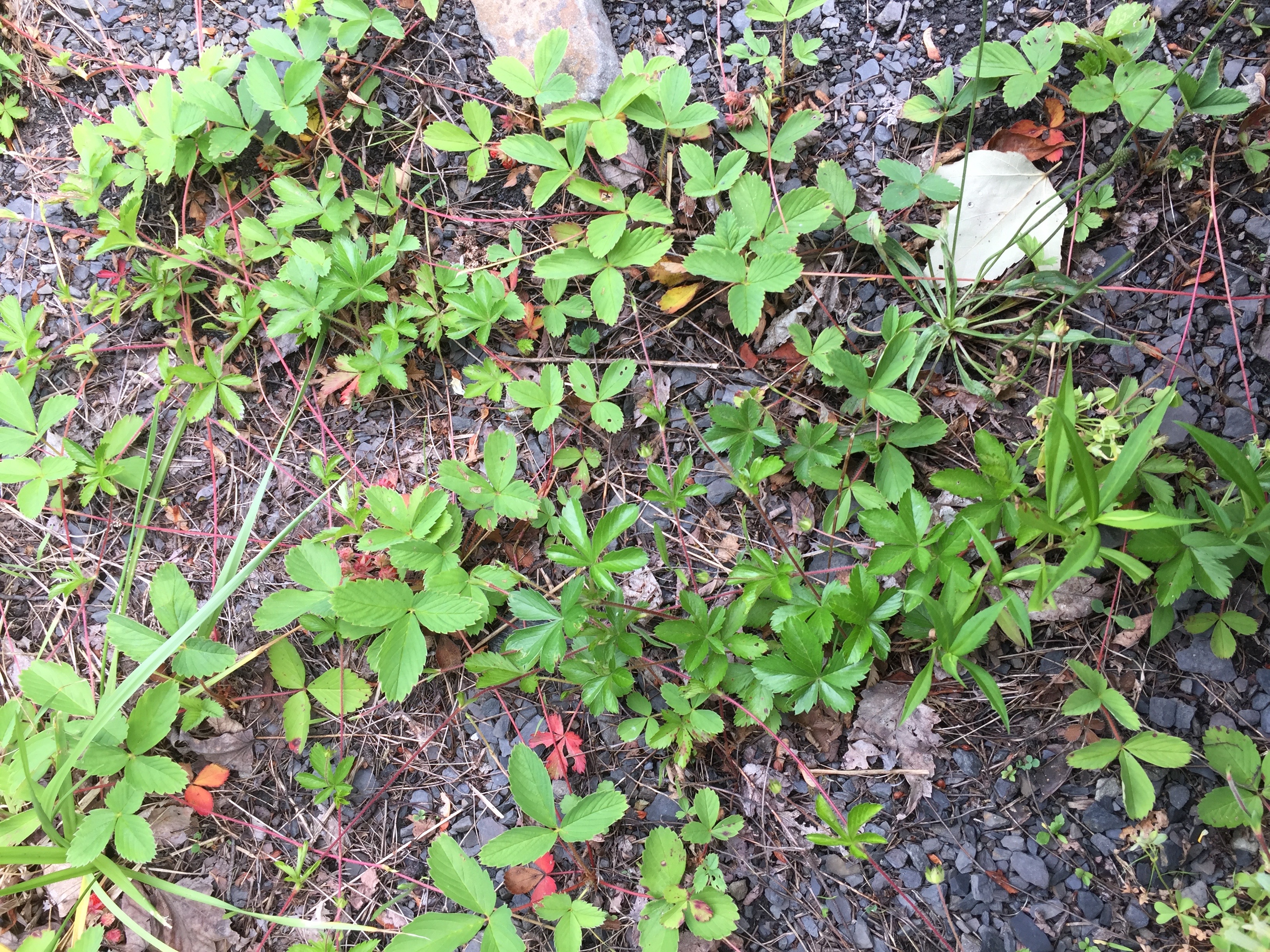The delicious and delightful wild strawberry just came into season here in Western PA, and I thought I’d share a bit about how to find this plant and why it is worth seeking out both as a wild food and a wild medicine. Wild strawberry is incredibly flavorful and delicious, and in my opinion, is a really high quality wild edible that is worth seeking out (which, thankfully, isn’t that difficult). Strawberry leaves also serve a medicinal purpose as a gentle astringent. This post will detail where wild strawberry typically grows, its overall growth habit, two look-alikes that should be avoided, and some information on how to harvest and enjoy wild strawberry.

The wild strawberry is also known as the woodland strawberry, alpine strawberry (although there are other cultivars also known as alpines that are clumping, fragaria vesca is a running variety), or European strawberry. It is abundant and diverse and grows in many temperate places in the US and beyond. It is a great beginner wild food and wild medicine!
Wild Strawberry Growth Patterns
At the right time of year, you can spot the little white wild strawberry flowers underneath or alongside the wild strawberry leaves. They are in the rosacacea family, and so, have five white petals with five bracts (little leaves in between the petals) and a number of small pollen pods that are yellow surrounding a yellow stamen. About a month later (in my region, at least) you can find the delicious red fruits.

Wild strawberry prefers to grow in full sun and is found in open fields or along edges of fields and brush/forests. This is where you will find it fruiting. I have found it a lot in fields that were once farms and with low soil fertility, also on the edges of roadways, etc. It seems to have no problem with poor or rocky soil or soils that are partially bare and hot. But I’ve also found it along lush edge spaces–interestingly enough, the poor soils seem to produce smaller, but more flavor-rich fruit. Like other wild berries, if there is little rain, fruits will be more potent and delicious than if there was a lot of rain before ripening (like this year). Wild strawberry grows in other places as well, like inside forests with a bit of light, but often these plants do not have enough light to fruit.
Strawberry is a plant that travels as it grows–strawberries slowly creep from one area to another. A single strawberry patch will expand eventually into a ring, and then break off in different directions; the older plants send out new runners and slowly expand as they go (which is an awesome thing to see)! I saw this firsthand at my homestead in Michigan-what started as a sizable single patch, later turned into a ring and into diverse new patches; the original patch was taken over by ground ivy and cinquefoil, primarily.
Wild Strawberry Look-Alikes
Wild strawberries are very easy to find, but so are their lookalikes (and sometimes, they are all growing in the same area). There are two plants that look like wild strawberries, false strawberry (Duchesnea indica) and Cinquefoil / Potentilla spp. I’m going to cover each so you know what the differences are.
Creeping Cinquefoil (typically, Potentilla Reptans) is found in the same places as wild strawberry, often growing alongside it. Cinquefoil has five leaves and yellow flowers that look similar to strawberry flowers. Cinquefoil never gets a berry, however, so its pretty easy to avoid. In the photo below, There are some cinquefoils right in the middle of this strawberry patch (there are also some small goldenrod shoots on the right next to the Cinquefoil).
Here’s a closeup of the Cinquefoil leaf (bottom) and a strawberry leaf (top). The strawberry leaf has three leaves (trifoliate) while the Cinquefoil has five radiating leaves (palmately compound).

Cinquefoil itself is medicinal, its roots are moderately antimicrobial when put in contact with infected tissue (so you can make a salve or wash with them). But they aren’t tasty like strawberries!
The second look alike is known as “false strawberry”, “mock strawberry” or “indian strawberry.” It produces a berry that looks a lot like a strawberry, and it has leaves similar to a strawberry, but the berry is flavorless. You can eat it, but who would want to? It tastes like nothing. The berry also has seeds on the outside (not indented like the wild strawberry) and many seeds in a very orderly fashion (see below). It has a yellow flower (so if you can ID the flowers earlier in the year, you will know it is a false strawberry vs. the white flower of the wild strawberry). A simple rule of thumb is to not eat anything with yellow flowers and stick only to the white flowers. Its been a while since I’ve seen one of these; they aren’t nearly as abundant around where I live as the Cinquefoil (which is as abundant as strawberry herself).
Here’s a photo of one (courtesy of Wikipedia, I forgot to take a photo!)

The false strawberries grow up, pointing towards the sky while the wild strawberries are usually hanging or growing on the ground.
Harvesting Strawberry Leaf and Strawberry
When doing any wild food foraging, you should make sure that you are harvesting in a safe environment, free of toxins and not too close to houses with lead paint, roads, and so forth (see my earlier post on foraging part 1 and part 2).
There are a few tricks to harvesting wild strawberries. Like garden strawberry varities, dense foilage can often cover the tasty berries. You can use your hand to gently move away the leaves to get at the berries. You’ll also want to work your way carefully through the patch, trying not to step on any as you work through. Although they are small, they are often abundant, and if you gather for even 10 -15 minutes, you’ll have several handfuls for fresh eating. Remember that there might be a ring, or a line, or several patches in the area–so look carefully! Strawberries ripen over a period of a week or so, so you can come back every day or so for more fresh strawberries.

Since wild strawberry is so small, I typically just eat them fresh. If you had them in extreme abundance, they’d certainly make a nice jam. I once combined about 2 cups of fresh wild strawberries with some I had grown that were much larger for a jam–that was great. If you had them in a lot of abundance, you can also dry them and enjoy them anytime or make fruit leather (see my instructions here).
Finally, a note about balance. I think that it is important to give something in return to the plant itself if you are harvesting fruit or leaves. This can take a number of forms: a bit of organically grown tobacco is a welcome gift to many plant spirits. If you are willing to scatter some of the strawberries themselves (with their seeds) the strawberries will be very happy. You might find other things to do as well, but these are two I have found are very effective.
Strawberry Leaf as Medicine
Strawberry leaf is packed full of vitamin C and can be enjoyed as a tea either fresh or dried. The tea has a mild and slightly fruity flavor (and some substitute it for green tea when a person can’t have caffeine). I like to harvest leaves (maybe one per plant) when they are first blossoming. They get a bit stronger after the fruit comes in (still fine to harvest for medicine). A lot of folks will use these gentle leaves as a nourinshing tea that is tonic on the body and soothes the digestive system, particularly for those who suffer from diarrhea or loose stools and/or could use immune system support (provided by Vitamin C).
Strawberry leaf is also a gentle astringent (with a high tannin content). I like to use it as part of an eyewash for conjunctivitis/pink eye when the eyes are goopy and watery (in conjunction with plantain for healing). It is also great for a daily rinse for the gums and teeth. Herbalists have used this successfully in tooth powder recipes to help treat plagque and bleeding gums (typically with clay, baking soda, and so on).
You can also brew up a strong cup of strawberry leaf tea and use it as a treatment for sunburn, simply lathe the affected areas with a soft cloth or cotton ball. If you combine this with calendula or plantain, it is even more effective.
Please know that wild strawberry leaf is much more medicinal than its domestic counterpart. You can use domesticated strawberries, but I have found the medicinal qualities much higher in wild strawberries (this is similar to Yarrow–the more difficult growing conditions, the more medicinal and aromatic the plant!)
Concluding Thoughts
I love the gentle spirit of the wild strawberry. She is giving, soothing, abundant, and magical! I hope that you will enjoy some of the benefits of this amazing and easy to find plant!




We have so many of these alpine strawberries (as well as the false strawberries) in our yard. Good, effortless eating! BTW, both houses are now rented to gardeners! One family already moved into my office/guesthouse. The other couple moves into our place on July 1, after we move out, but they are already gardening part of the yard. It has become the community garden I always sensed it could be. Yay! 🙂
I like the–effortless eating! I’m sooooo glad to hear that everything is moving along well with your transition and that the new caretakers are going to continue your work!
Thanks, and yes, it’s really perfect! Upgrades for everyone involved, and one of the people has helped me in the yard for years. 🙂
I always wanted to know more about wild strawberries — this information is so helpful! I wish I could find more in my suburban area of NC. I had discovered a patch of wild blackberries…..and they were torn out this year to build a house 🙁 I especially like your suggestions of the value of giving back to the plant in gratitude for the generosity of sharing her fruits with us 🙂 Thank you for all you share with us in this blog!
I’m glad you found the info helpful! Keep seeking the strawberries and brambles…they will find you 🙂
Thanks for sharing. I was pleasantly surprised to find my yard filled with these when I moved 9 years ago.
Yay! What a move in gift!
It really was I moved in June and there they were all over the yard.
Reblogged this on Rattiesforeverworldpresscom.
We have wild strawberries all over our place here in New Hampshire. We also have wild raspberries, blackberries, Elderberries, and blueberries.
[…] via Wild Food and Wild Medicine Profile: Wild Strawberry (Fragaria Vesca) — The Druid’s Garden […]
[…] June full moon, often aptly named the Strawberry Moon, actually reaches its fullest tomorrow (Friday) morning, but most North Americans will see it […]
Thank you, this was very helpful 💖
You are most welcome! 🙂
I live in a tropical country, and always found accounts of people picking wild berries in temperate countries to be so pleasant 🙂 As for plant spirits, I try to sort of psychically ‘reach out’ to them whenever I’m around a lot of nature, and I seem to have bonded with one of the Epiphyllum orchids in my mum’s garden. Thanks for this interesting post!
Is it different in a tropical country? we only have berries during certain seasons here, and for generally short periods of time. When you find them, it is very exciting :).
We do have ‘growing seasons’ for different fruits, but none are the sort you can romp out and carry in baskets XD Bananas and durians and mangosteens and mangos. I remember looking at all the pulp on the roadside when my neighbour’s mango tree used to bear fruit. So I suppose it can be a similar kind of excitement!
“the more difficult growing conditions, the more medicinal and aromatic the plant!” Now there’s an alchemical truth for us all! For me, it echoes the way life challenges can shape us, give us definition, compassion and maturity.
Truth. I’m going through some of those “tough growing conditions” myself…and this comment is a useful reminder. Thanks Kieron!